Do you know how much force it takes to break a motorcycle helmet? It’s an important question to ask, as your safety depends on the quality of your motorcycle helmet and its ability to withstand impact. Wearing a motorcycle helmet while riding can greatly reduce the chances of serious head injuries in case of an accident. To ensure optimum safety, it is essential to choose the right type and size of motorbike helmet along with taking proper care of it – cleaning regularly and inspecting for any signs or rips or damages. Understanding the strength and durability of different types of helmets is also critical when considering protection from serious impacts while riding. In this blog post, we’ll explore how much force it takes for a motorcycle helmet to break – and discuss the importance of maintaining adequate protective measures when out on two wheels!
Table of Contents
Importance Of Wearing A Helmet
The importance of wearing a helmet while riding cannot be overstated. Helmets reduce the likelihood of head injuries in the event of an accident, and can greatly reduce the severity of injuries if they do occur. Wearing a helmet also reduces the chance that you will suffer from major brain damage or death in case of an accident. Properly fitting helmets are designed to provide protection from impact forces, and help to reduce skull fractures, traumatic brain injury, and other severe head trauma.
In most countries, wearing a helmet when operating a motorized vehicle is required by law. Even if it isn’t legally mandated in your area, the importance of wearing a helmet should not be overlooked. Taking safety seriously and protecting yourself with a properly fitted helmet can mean the difference between life and death while on the road. So investing in a quality helmet that fits correctly is the best way to ensure your personal safety while riding or driving any type of motorized vehicle. By doing so, you are helping to protect yourself and your family from serious injury or death, as well as reducing the likelihood of legal repercussions should an accident occur. [1]
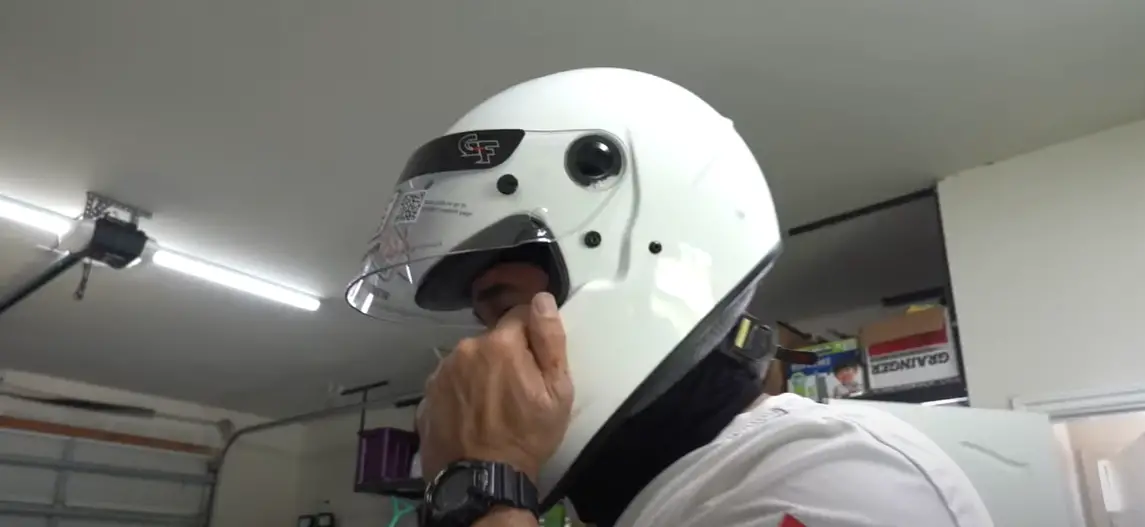
The Physics Of Motorcycle Helmet Design
Modern motorcycle helmets are designed with safety, comfort, and style in mind. The science behind their design takes into account several factors, including aerodynamics, fitment, impact resistance, and more. Here, we look at the physics of motorcycle helmet design and how it keeps riders safe on the road.
When choosing a helmet for motorcycle riding, one of the key considerations is aerodynamic performance. Helmets need to be designed so that they reduce drag when wind is blowing against them while still allowing adequate airflow through vents to keep the rider cool. To do this effectively requires careful manipulation of shapes to create a slick surface that lets air slip over it without creating turbulence or drag.
The other major factor considered in helmet design is fitment. Helmets need to fit snugly against the rider’s head in order to provide optimal protection. This is achieved through careful measurements of the rider’s head as well as using specialized materials and liners that conform to their shape for a secure and comfortable fit.
Impact absorption also plays an important role in helmet design. Materials like EPS foam and polycarbonate are used together with inner layers of plastic, rubber, and other padding materials to absorb shock from collisions or falls. In addition, special features like chin bars help protect the jaw area from impact as well.
Finally, motorcycle helmets are designed with style in mind. Graphics can be added to make them look more attractive, while colors and other design aspects are chosen to make them stand out from the crowd. The physics of motorcycle helmet design helps ensure that riders look great as they stay safe on the road.
With advances in technology, modern motorcycle helmets have become increasingly sophisticated in terms of safety, comfort, and style. By understanding the physics of helmet design, riders can enjoy increased protection while looking their best on the road. [2]

What Are the Components of a Motorcycle Helmet Construction?
Motorcycle helmets are designed to protect riders from head injuries in the event of a crash or other impact. The construction of a motorcycle helmet involves several components, all of which work together to provide protection and comfort for the rider.
The outer shell is one of the most important parts of a motorcycle helmet construction. Generally made out of polycarbonate or fiberglass composite materials, an outer shell provides structural strength against external impacts while also providing an aerodynamic shape for shielding wind noise and buffeting. In some cases, helmets may feature dual-density EPS foam liners that absorb more energy from impacts.
In addition to these components, motorcycle helmets also feature other features designed to aid in safety and comfort. Ventilation holes are typically included for airflow, while straps often include quick-release buckles for easy on/off access. Some models may also feature internal sunglasses or earplugs which can be removed when not in use. [3]
Finally, some manufacturers have begun incorporating communication systems into their helmets for riders who want to communicate with their passengers or other riders. They include speakers, microphones, and other electronics.
What are the Ways to Break Motorcycle Helmets?
Motorcycle helmets are designed to protect riders from head injuries in the event of an accident. However, a helmet’s strength and durability can be compromised if it is not properly cared for or if it is subjected to certain types of force. If a helmet is broken or cracked, its protection level decreases significantly. Therefore, it’s important to know how motorcycle helmets can become damaged so that you can take measures to prevent it.
- Dropping: Even when dropped from a relatively low height on a hard surface, motorcycle helmets may crack around the edges or suffer other damage.
- Abuse: Hitting or throwing the helmet can weaken it over time and reduce its protective capabilities.
- Chemical Exposure: Many helmets are made of plastics which can be damaged by exposure to certain chemicals.
- Excessive Heat: Temperatures that exceed the recommended level for a motorcycle helmet may cause it to crack or become brittle.
- Sunlight: Prolonged exposure to direct sunlight can damage the protective coating on a helmet, making it more susceptible to cracking.
- Age/Wear and Tear: As a helmet ages, its outer shell may become weak due to regular wear and tear or simply because time has taken its toll on it.
- Poor Fit: If a helmet doesn’t fit properly or is too loose, it won’t be able to provide optimal protection in the event of a crash. [4]
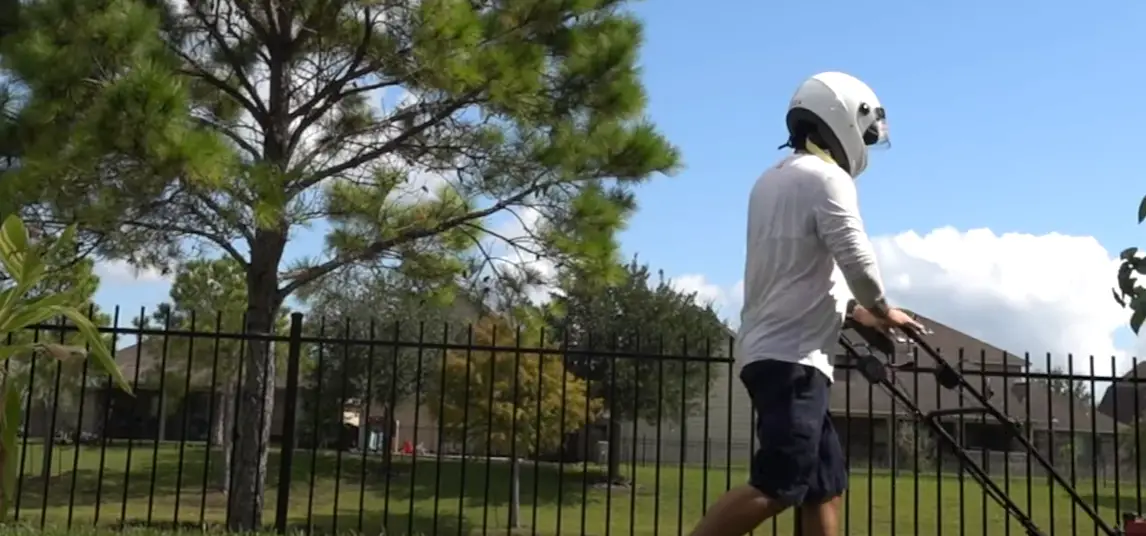
How Much Force Can A Helmet Take Before It Breaks?
Helmets are designed to disperse the force of impact and absorb some of its energy, which can help reduce the severity of a head injury. The amount of force that a helmet can take before it breaks depends on various factors, such as its construction materials, design, and how it was manufactured. Generally speaking, most helmets are capable of taking forces up to 200G (200 times the acceleration due to gravity) before they eventually break or suffer permanent damage. For comparison, a typical car crash has an average force between 25-75G in just 0.1 seconds.
Helmets should be routinely inspected for wear and tear after any significant impacts in order to ensure their safety and effectiveness. It is also important to replace a helmet after any major impact, even if it doesn’t appear to be damaged. This is because the materials inside a helmet can become weakened and less effective over time despite no visible signs of damage on the outside. [5]
How To Make Sure Your Helmet Is In Good Condition?
When it comes to safety, your helmet is your most important piece of equipment. To make sure that you are properly protected while riding, it’s essential that your helmet is in good condition and fits properly. Here are some tips to ensure that your helmet is ready for the road:
Check your helmet for any cracks
Look over the surface of your helmet for any signs of damage. If you find a crack, replace the helmet immediately as it no longer provides adequate protection.
Replace both the liner and padding
Over time, liners and padding can become worn or loose inside the helmet, so it’s important to check them regularly and replace them when necessary. Be sure to follow the manufacturer’s instructions when installing new liners and padding.
Inspect the straps
Make sure that all straps are secure and adjusted correctly for a snug fit. If you find frayed, worn or stretched straps, replace them immediately.
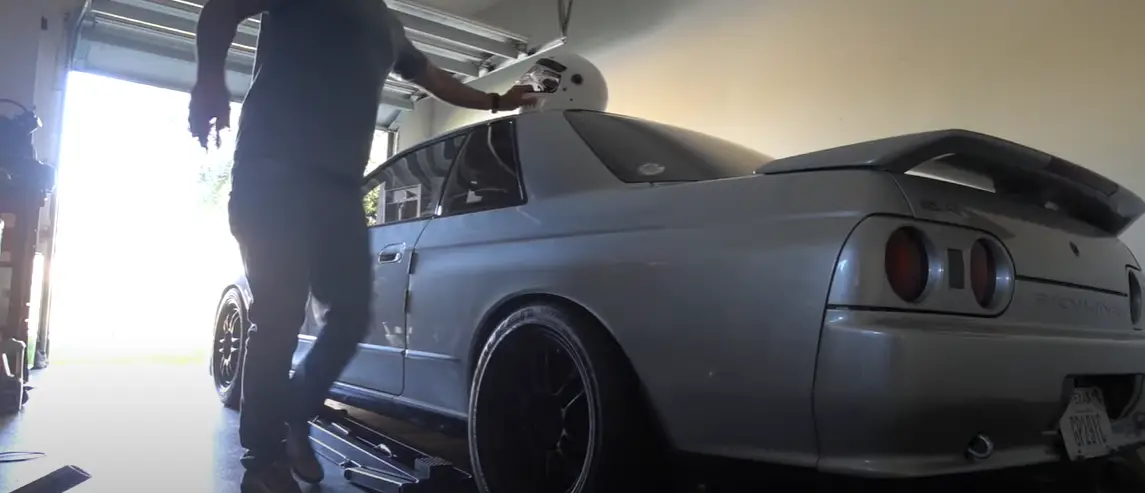
Make sure that the fit is correct
When wearing your helmet, it should sit level on your head with enough space between your forehead and the rim of the helmet to fit two fingers comfortably. Always take the time to adjust your helmet before heading out on a ride.
By following these tips, you can make sure that your helmet is in good condition and ready for the road! Wear it every time you get on a bike to stay safe while enjoying your ride. [6]
Importance Of A Well-Maintained Helmet
A well-maintained helmet is an important part of any rider’s safety gear. It provides protection in the event of a crash and keeps you safe while on the road. Properly maintaining your helmet can also help extend its life, saving you money in the long run. Here are some tips for keeping your helmet in top condition:
- Inspect your helmet before each ride to make sure that it is free of dirt, grime or debris that could affect its performance. Check for cracks, frayed straps or other signs of wear and tear that might compromise its integrity.
- Clean your helmet using a mild soap and warm water. Avoid using strong detergents as they can degrade the shell material over time.
- Change your helmet after a crash or if it has been damaged in any way, even if the damage isn’t visible to the eye.
- Avoid storing your helmet in extreme temperatures or direct sunlight as this can degrade the shell material and reduce its protective capabilities over time.
- Consider replacing your helmet every five years, even if it does not show signs of wear and tear, as this helps ensure that you have maximum protection while you’re on the road. [7]
Are Bike Helmets Designed To Break?
Bicycle helmets are not designed to break. Bicycle helmets are designed to absorb and deflect an impact, which helps reduce the severity of a head injury should a cyclist be involved in an accident. This means that while a helmet may crack or become damaged after an impact, it is not intended to shatter or break apart on purpose.
When designing and creating helmets, manufacturers take into account the way it should respond when subjected to force. A good quality helmet will have a hard outer shell made from either polycarbonate plastic or carbon fiber composite materials that help spread the force of the impact over a wider area before dissipating it throughout the helmet’s inner foam lining. This lessens any trauma suffered by the head, reducing the risk of serious injury.
Bike helmets are also designed to be as lightweight and comfortable as possible in order to encourage riders to wear them correctly at all times. However, it’s important to note that even with a helmet on, cyclists should still take extra precautions so they can stay safe on the road. Wearing a helmet is an essential part of cycling safety but it cannot guarantee that you won’t suffer any sort of injury if involved in an accident.
Additionally, keep in mind that while bicycle helmets are not designed to break apart on purpose, certain factors such as age or improper fit could reduce their effectiveness in protecting the head. If you have a helmet that is older than 5 years, it may be time to replace it with a new one since the protective foam can break down over time and become less effective. [8]

How Long Do Motorcycle Helmets Last?
The general rule of thumb is that they should be replaced after 5 years of use or if there is any sign of damage. This includes dents, cracks, and other forms of wear and tear. To know when it’s time to replace your helmet, make sure you check it regularly for these signs.
Helmets are created to absorb a certain amount of energy from a crash, so if yours has been through an accident, you should replace it immediately even if there are no visible signs of damage. It’s also essential to note that ultraviolet (UV) radiation from the sun can also weaken the protective lining over time. So even if you don’t ride too often, you should still consider replacing your helmet every five years.
Keep in mind that each rider’s head size and shape can change over time, so if you find yourself having to adjust the straps or padding more often than usual, the helmet may no longer fit properly and it’s time for a new one. [9]
How Does a Helmet Help in a Crash?
Helmets are an essential piece of safety equipment for motorcyclists and cyclists alike, so be sure to invest in a good quality one and wear it when you ride.
A properly fitted helmet can provide invaluable protection during a crash by helping to reduce the severity of an injury. Wearing one while riding can make all the difference in an accident, so be sure to find one that fits you well and wear it every time you ride. [10]
FAQs
How long does it take to break a motorcycle helmet in?
That depends on the type of helmet and the force of impact that it is subject to. Generally speaking, most motorcycle helmets are designed to protect against a single serious impact, though they may not offer any protection against multiple impacts or low-speed impacts. If you have doubts about your helmet’s integrity, you should replace it as soon as possible. The best way to avoid an accident is by wearing a high-quality, certified helmet and following safety protocols while riding.
Are motorcycle helmets fragile?
Motorcycle helmets are generally designed to be tough and durable, providing riders with the necessary protection in case of an accident. However, it is important to note that even the toughest motorcycle helmet can become damaged if not properly cared for or frequently used. Additionally, certain styles of motorcycle helmets may be more prone to damage than others due to their materials or design features. It is also important to remember that all helmets should be replaced after a significant impact or crash – regardless of how minor the incident may have been. Taking proper care of your helmet and replacing it as needed will help ensure you stay safe while on the road.

How to adjust a motorcycle helmet quickly?
Ensure the chin strap is adjusted to fit snugly around your chin and throat area. A good rule of thumb is to ensure you cannot slide more than one or two fingers between the strap and your skin. Adjust the back of helmet straps by pulling them outward away from each other, creating tension for a secure fit against the back of your head. It should be tight enough that it does not move when you shake your head side-to-side.
Check the positioning of your helmet on your head – it should be centered so that it covers most of the top portion of your forehead, sits low across the brow line, and just above the eyebrows in front. The sides should also cover the same amount of area on both sides. Check if no hair strands are getting in the way of a secure fit by tucking them inside the helmet as needed.
How much weight can a helmet withstand?
The amount of weight depends on the type of helmet and its construction materials. Generally, full-face helmets are built to be more durable than open-face models, as they must be able to protect the head from impacts at higher speeds. Most helmets have a maximum rated impact strength of between 22 and 43 kN. This rating is typically printed on the inside or outside of the helmet. The higher this number is, the more force it can absorb before failing. It’s important to note that these ratings only apply when wearing an approved helmet in ideal conditions. No helmet is 100% safe for all conditions.
Useful Video: Effective Way to Break In a New Helmet that hurts your Head / autocross scca gridlife
Wrapping Up
In conclusion, no motorcycle helmet can withstand every force imaginable – however, modern helmets have been tested to handle at least several thousand pounds of force. This means for most purposes, a modern motorcycle helmet is perfectly capable of providing you with the protection it was designed for during an accident. Taking proper care of your helmet is still key as dirt and debris can cause some wear-and-tear and compromise the protection a motorcycle helmet offers. An annual checkup with a professional will help keep your helmet in optimal condition so choose one that fits comfortably and meets safety requirements. So gear up and stay safe – remember, protecting yourself while riding a motorcycle is always a must!
References:
- https://www.rush.edu/news/helmet-safety-keep-lid-it
- https://motofour.com/how-much-force-can-a-motorcycle-helmet-withstand/
- https://www.devittinsurance.com/guides/a-guide-to-motorcycle-helmets/construction/
- https://motorandwheels.com/do-motorcycle-helmets-loosen-up/
- https://helmethacks.com/how-much-force-does-it-take-to-break-a-motorcycle-helmet/
- https://www.driverknowledgetests.com/learners-permit-questions/motorbike/bike-specific/620-to-ensure-a-helmet-is-in-good-condition-you-sh/
- https://active-workwear.co.uk/blogs/news/safety-helmets-understanding-the-purpose-and-importance-of-this-essential-equipment
- https://www.popularmechanics.com/technology/a27081/how-bike-helmets-work/
- https://timeless2wheels.com/682077/do-motorcycle-helmets-expire/
- https://www.scienceabc.com/sports/how-do-helmets-protect-us-in-a-crash.html

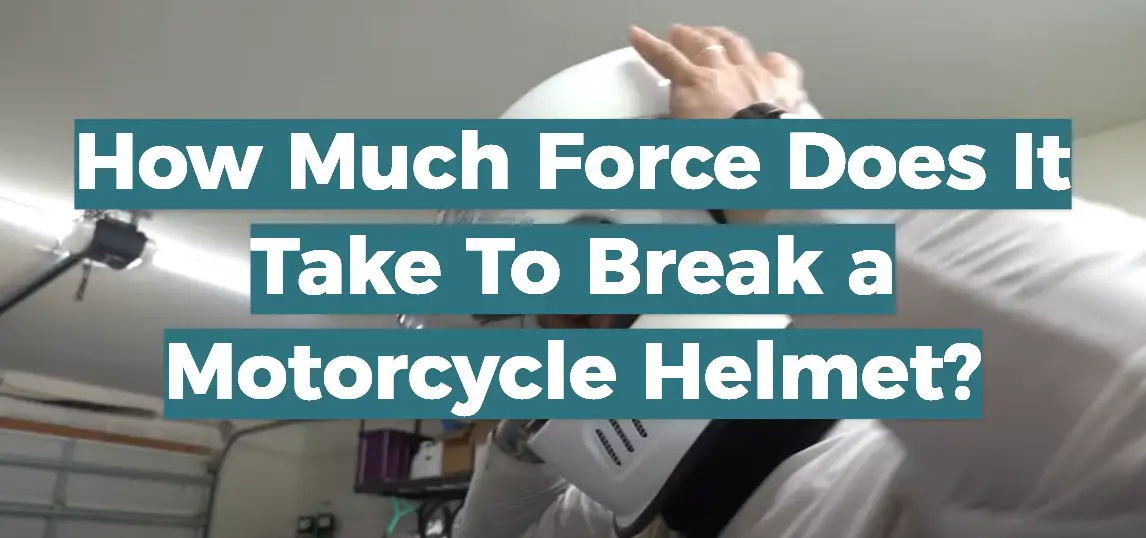


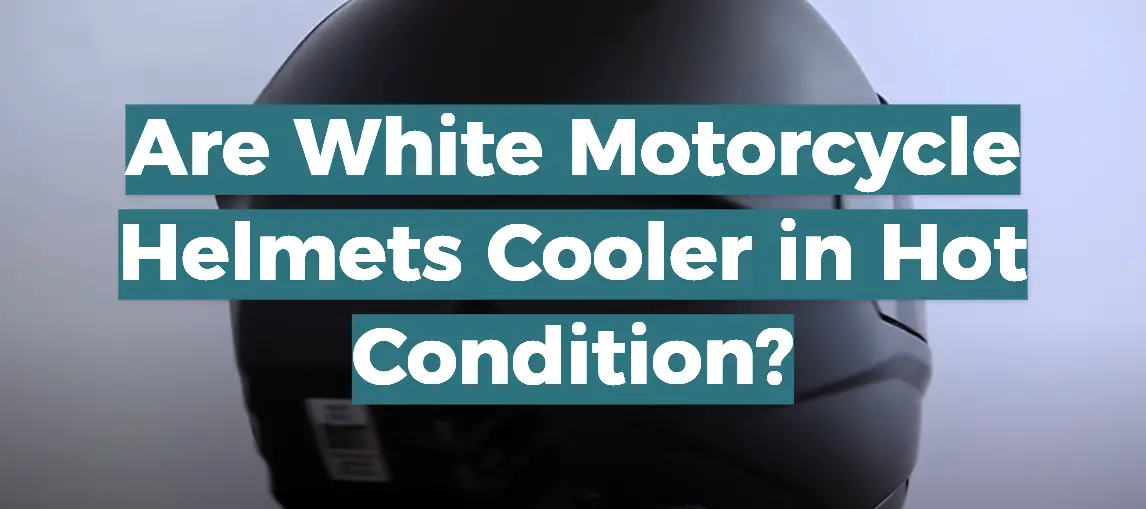
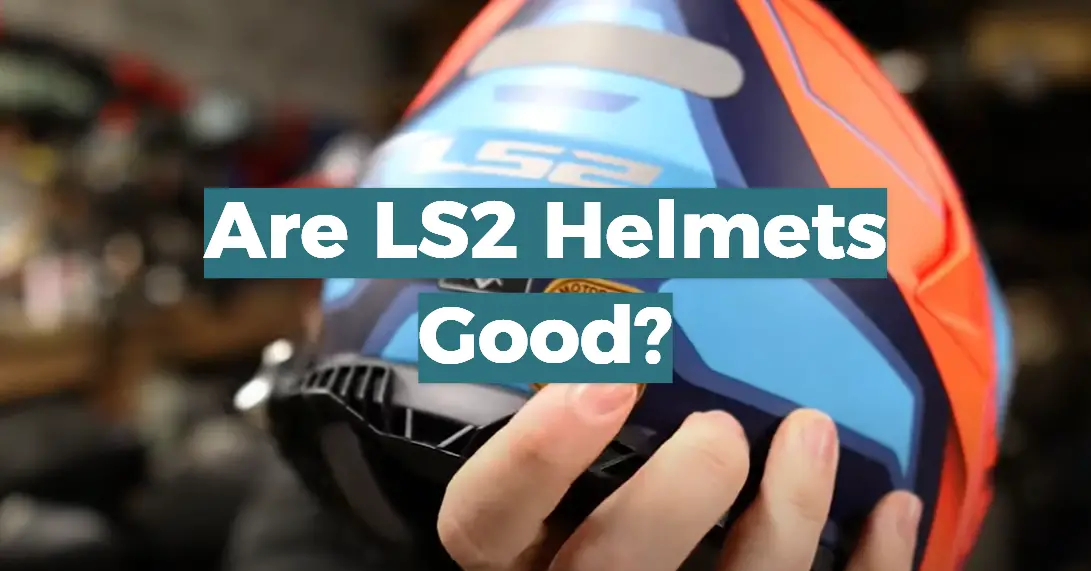
Leave a Reply